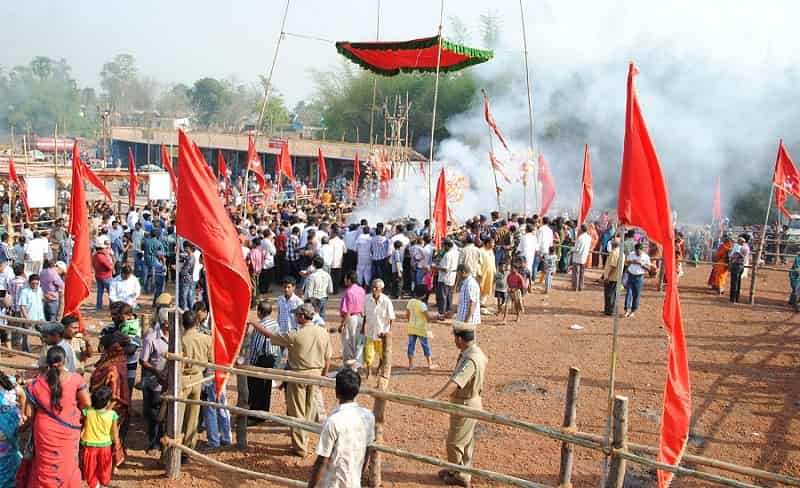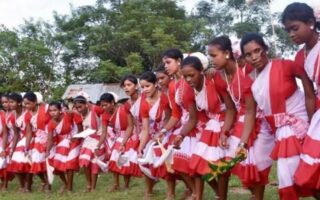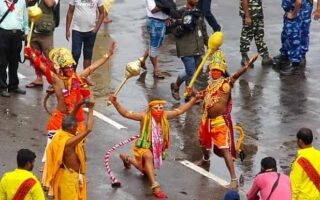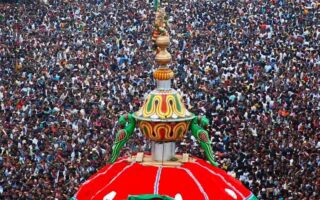- Area: Remote rural settlements of Orissa (Talcher, Angul)
- Also called as: (Patua Yatra)
- Falls in the eve of: Vishuba Sankranti
- Idol: Goddess Mangala or Hingula
The majority of the fiestas are common amongst the low-creed Hindus and are moreover linked with the adoration of Lord Shiva or ‘Shakti’. It is assumed to have developed out of mass spiritual culture of the natives under the magic charm of (Tantrism) in the distant past. Patua Yatra or Hingula Yatra is one such unique festival.

Legend
The local people believe that on this sacred eve of (“Visuba Sankranti”) Goddess ‘Hingula’ emerges and conciliation to Goddess eliminates all the evil forces. Goddess Hingula is revered in the street of the village on her fantasy pace to the township. Offering like spitted fresh cloth, butter lamp, green mangoes and sweet water also known as ‘Pana’ (sweet-water).
Celebration
In distant villages, this fiesta is celebrated with much severity. Those who keep fast, particularly women are known as ‘Osati’. Preceding to this day of adoration the fasting parishioners (generally men) budge from one village to another with the consecrated -pitcher representing the Goddess. The sacred march is always escorted by dancing and singing. These parishioners are known as ‘Patuas’.
The one who boogies with the sacred-twirler on his head dresses in a black skirt, a red blouse and a long bit of (black cloth) firmly layering (the head) also bearing alike length on equal sides to surge. While dancing, (the Patua) grasps the last part of the piece of cloth and budges them creatively with prolonged arms in ideal accord to the musical pattern.
Different Types of (Patuas)
The Chief of the community of patuas is known as Katha Patua or ‘Bada-Patua’. Each and every (Patuas) observe fast on this eve. In the hours of daylight, they gather close to a river or tank where each and every rites take place. Cleric performing the sacred rites is forever a non-Brahmin called as Dehuri or ‘Jadua’. At the time of the rituals, children, women and men, of the rural communities gather together.
The neighboring area echoes with propitious ‘Hulahuli’ (a piercing noise made by wiggling the tongue within the lips) and (‘Hari Bol’) applause of men.
This festival is especially commemorated at shakti or Shiva Shrine. As a result, it is believed that practice of black magic or tantrik activities are more frequent over here. As the tantrik culture believes in hard core intensity for drawing attention like eating human and animal flesh, hurting themselves etc. It is advised by the experts not to try any of the activities practiced by them.


